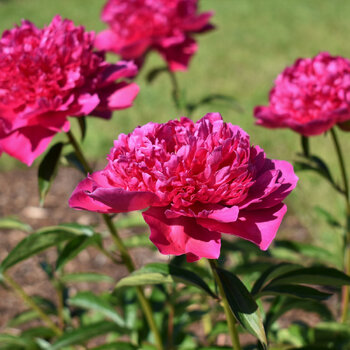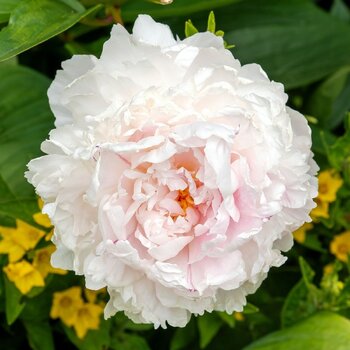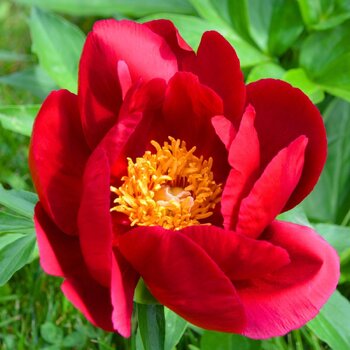
How to Grow Peony Herbaceous
Grow Guide #3010
Family:
Binomial name:
Life Cycle:
This 'How to Grow' guide details everything a home gardener needs to know to plant, grow and care for ( ).
What are Herbaceous Peonies?
Herbaceous peonies are cultivars of the peony, Paeonia lactiflora, which originates from China. They are hardy long-lived bushy perennials that can live between 50-70 years, and they produce large opulent flowers in a range of forms and colours. Some varieties are scented and they make good cut flowers.
They have a large fleshy root system that forms a crown of buds which is dormant during winter. In spring, the buds sprout to form a large leafy bush and flowers usually appear in late spring and early summer. Flower colour ranges from purple, pink and red, to yellow and white.
Herbaceous peonies are only available seasonally as they are dug up during their winter dormancy. They are supplied as tuberous roots that have a few buds or eyes, and the roots are packed in moist coir to prevent them from drying out during shipping.
When to Plant Herbaceous Peonies
Plant herbaceous peony tuberous roots as soon as you receive them. They are best planted in winter (June, July, August) as they like to set some roots down into the soil before spring growth begins.
Use the table below to identify the best time of year to plant herbacous peony tuberous roots in your climate.
| JAN | FEB | MAR | APR | MAY | JUN | JUL | AUG | SEP | OCT | NOV | DEC | |
|---|---|---|---|---|---|---|---|---|---|---|---|---|
| Cool | ||||||||||||
| Temperate | ||||||||||||
| Sub-Tropical | ||||||||||||
| Tropical | ||||||||||||
| Arid |
Preparation
plants are perennial, meaning they live for several years. Choose a permanent position where plants can grow undisturbed by regular digging.
Herbaceous Peony plants do best in cool to temperate climates, as they need cold winters to set buds and flower well. Choose a sunny position with rich, well-drained soil.
plants grow best in soil that is alkaline. If soil pH is under 7, apply dolomite (calcium magnesium carbonate) or garden lime (calcium carbonate) in powder or liquid form at the recommended rate and water in well prior to planting. Lime increases the alkalinity (or pH) of soil, making nutrients more available to some plants. Learn more about preparing soil for planting here.
How to Plant Herbaceous Peonies
Dig a generous but shallow hole and firm the base of the hole. Spread smaller roots out and position the tuberous root with buds or ‘eyes’ facing upwards. Ensure the buds are no more than 2.5-3cm below the surface of the soil. Backfill with soil, taking care not to push the root any deeper.
Avoid planting too deep as they won’t flower well. Water thoroughly. Peonies need to feel the cold, so avoid mulching close to the crown as this acts like a blanket and can also harbour disease. Allow at least 60cm between plants to give them space to grow.
How to Grow
Peonies prefer a neutral soil and will benefit from regular applications of lime to keep the soil in their preferred pH range. Spreading lime towards the end of flowering helps root development and flowering the following year.
Provide protection from strong winds and stake plants to provide support for the large flowers if necessary.
Good air circulation around plants is beneficial as it helps prevent disease. Avoid placing mulch over the crown as this can increase the chance of a fungal disease occurring.
In autumn, the foliage will start to change colour and die back. When this happens, remove the whole bush by cutting it down to just above the ground. You can top dress the soil around the plant with compost or a complete fertiliser and lime, but avoid covering the crown. Fertilise again in early spring.
Newly planted peonies are unlikely to produce any flowers in their first growing season while they are getting established. They may only produce a small number of flowers in their second year, but from the third year onwards, they should start putting on a good show.
Peonies make good cut flowers. They are best picked when the buds are no longer hard but can be squashed when pressed gently. Cut the stems, leaving two sets of leaves on the plant, which will help the plant continue to grow.
Common Problems when Growing
Like all plants, is susceptible to some pests, diseases and other problems. Below is a list of the most common problems gardeners encounter when growing plants:
 Grey mould (Botrytis sp.) is a fungal disease that causes flowers to become mouldy and fruit to rot. Spores are transported by wind and can survive in soil or on green waste. The fungus spreads most in cool, damp weather. Prune off affected flowers and fruit, water plants at soil level (not on leaves) and if necessary spray with an appropriate fungicide or homemade spray.
Grey mould (Botrytis sp.) is a fungal disease that causes flowers to become mouldy and fruit to rot. Spores are transported by wind and can survive in soil or on green waste. The fungus spreads most in cool, damp weather. Prune off affected flowers and fruit, water plants at soil level (not on leaves) and if necessary spray with an appropriate fungicide or homemade spray..jpg) Powdery mildew is caused by fungal spores reproducing on the leaves of plants. First showing as white spots on leaves, affected areas can spread quickly to cover the entire leaf surface. While rarely fatal, powdery mildew can reduce yields. Water plants at soil level (not on leaves) to prevent spreading spores, allow good air flow between plants, remove affected leaves and if necessary spray with an appropriate fungicide or homemade spray. Read more here about powdery mildew here.
Powdery mildew is caused by fungal spores reproducing on the leaves of plants. First showing as white spots on leaves, affected areas can spread quickly to cover the entire leaf surface. While rarely fatal, powdery mildew can reduce yields. Water plants at soil level (not on leaves) to prevent spreading spores, allow good air flow between plants, remove affected leaves and if necessary spray with an appropriate fungicide or homemade spray. Read more here about powdery mildew here.
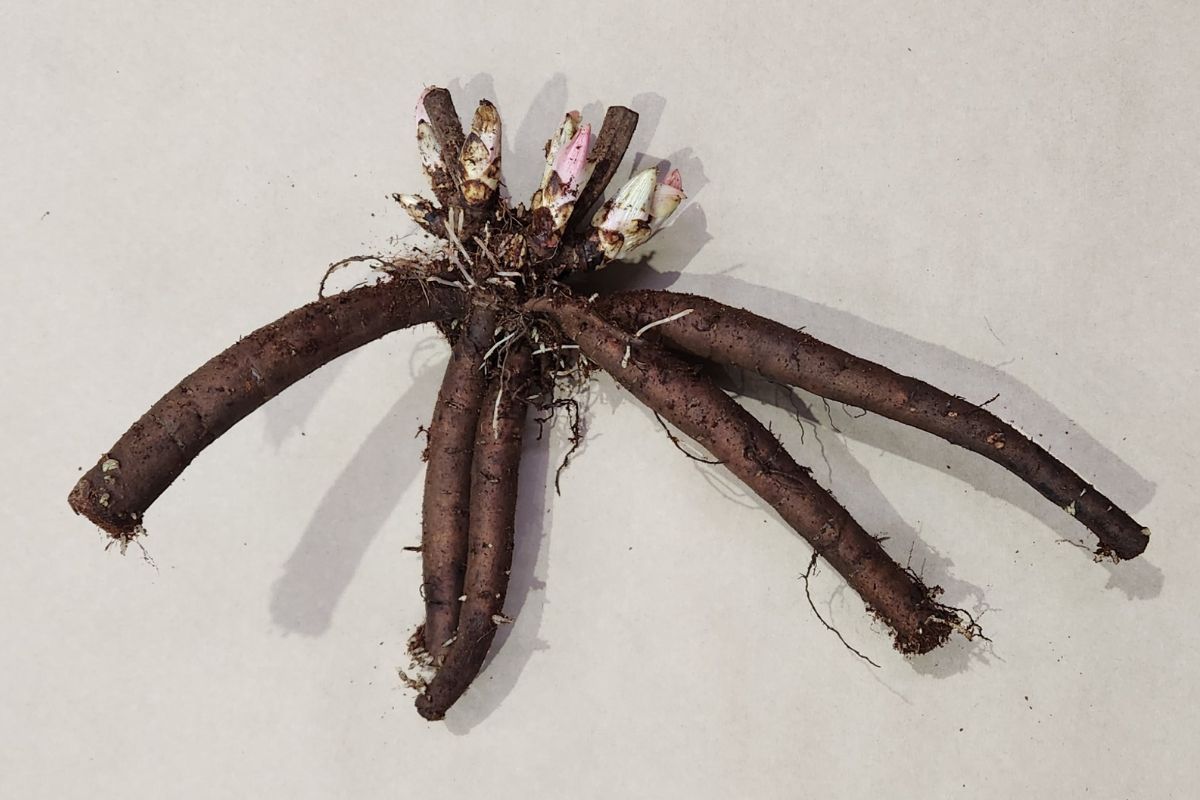 Plant peony tuberous roots this way up
Plant peony tuberous roots this way up
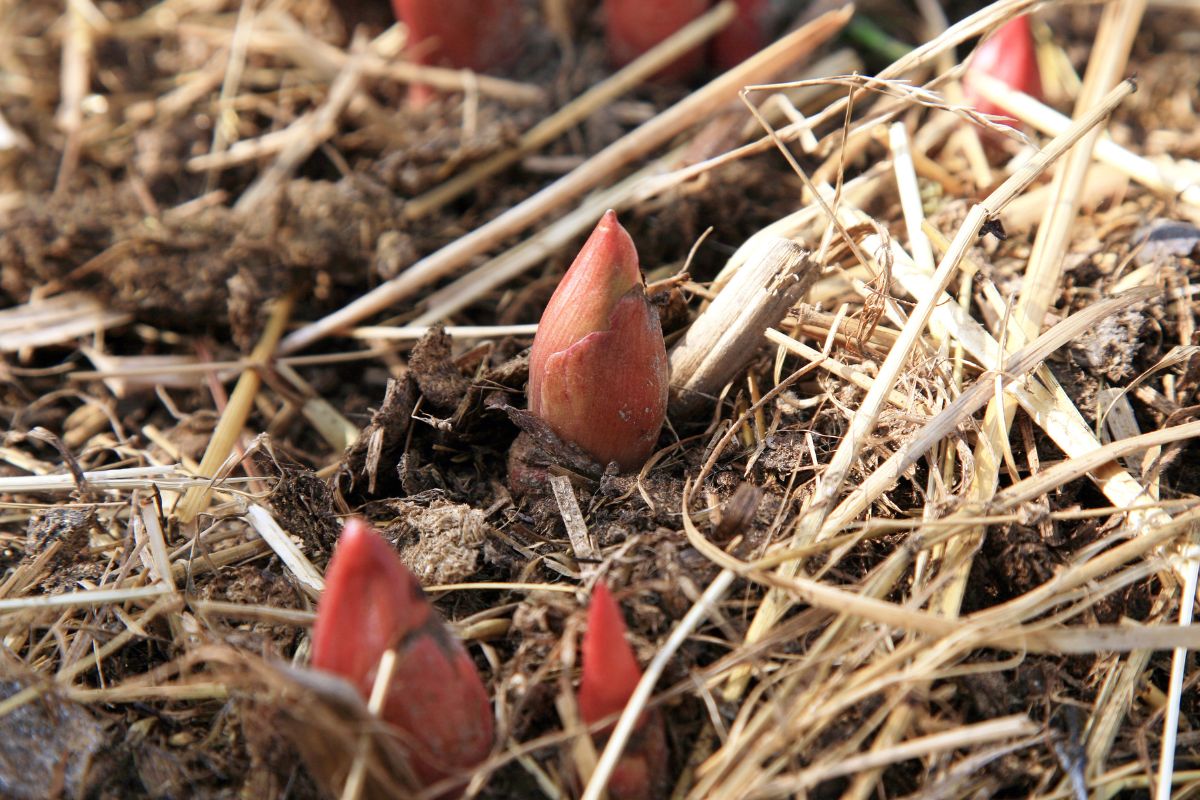 Peony buds appearing above the soil in spring.
Peony buds appearing above the soil in spring.
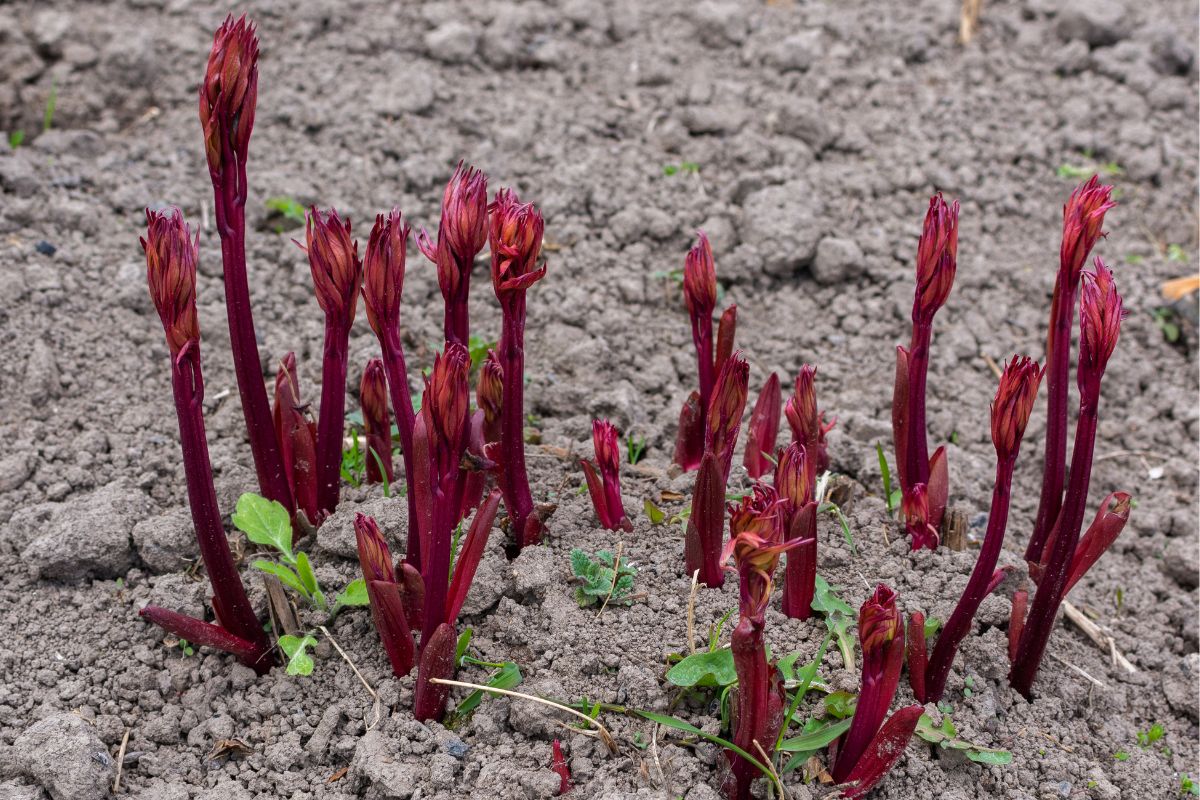 Peony shoots emerging from buds.
Peony shoots emerging from buds.
.jpg) Peony first leaves.
Peony first leaves.
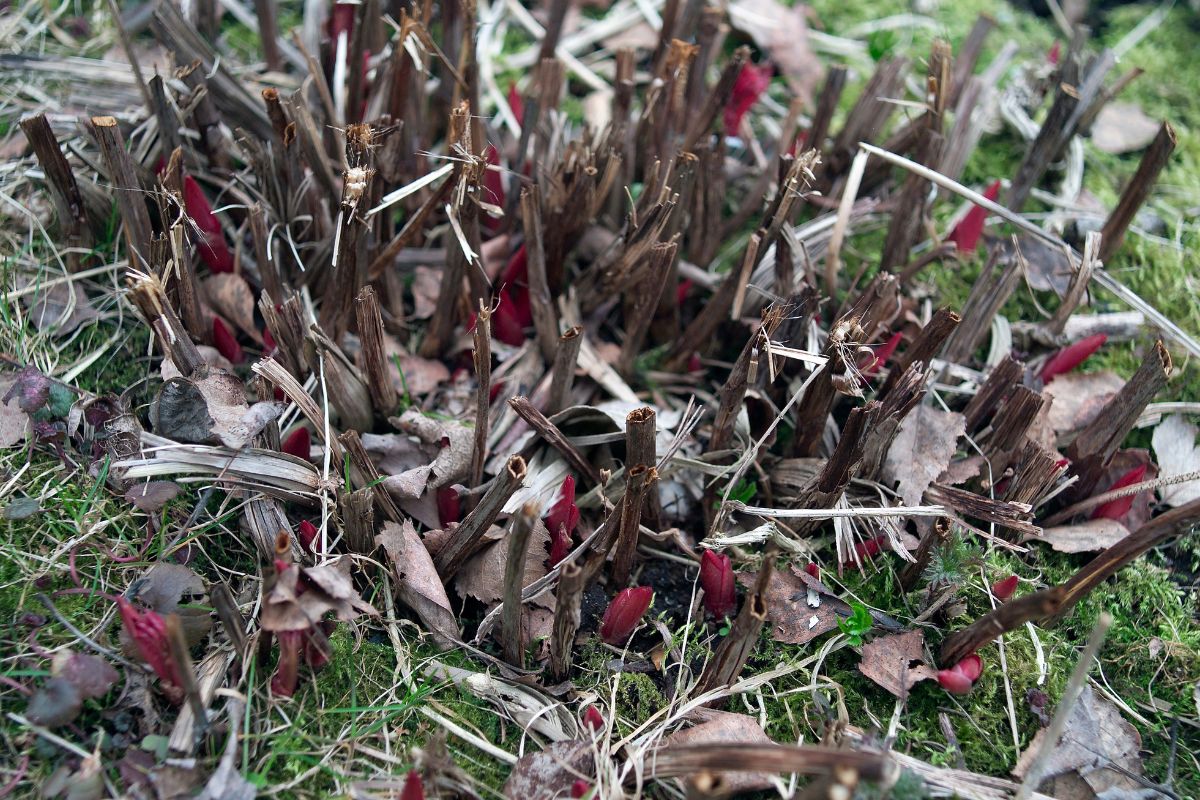 Peony previous year's growth and new sprouts.
Peony previous year's growth and new sprouts.
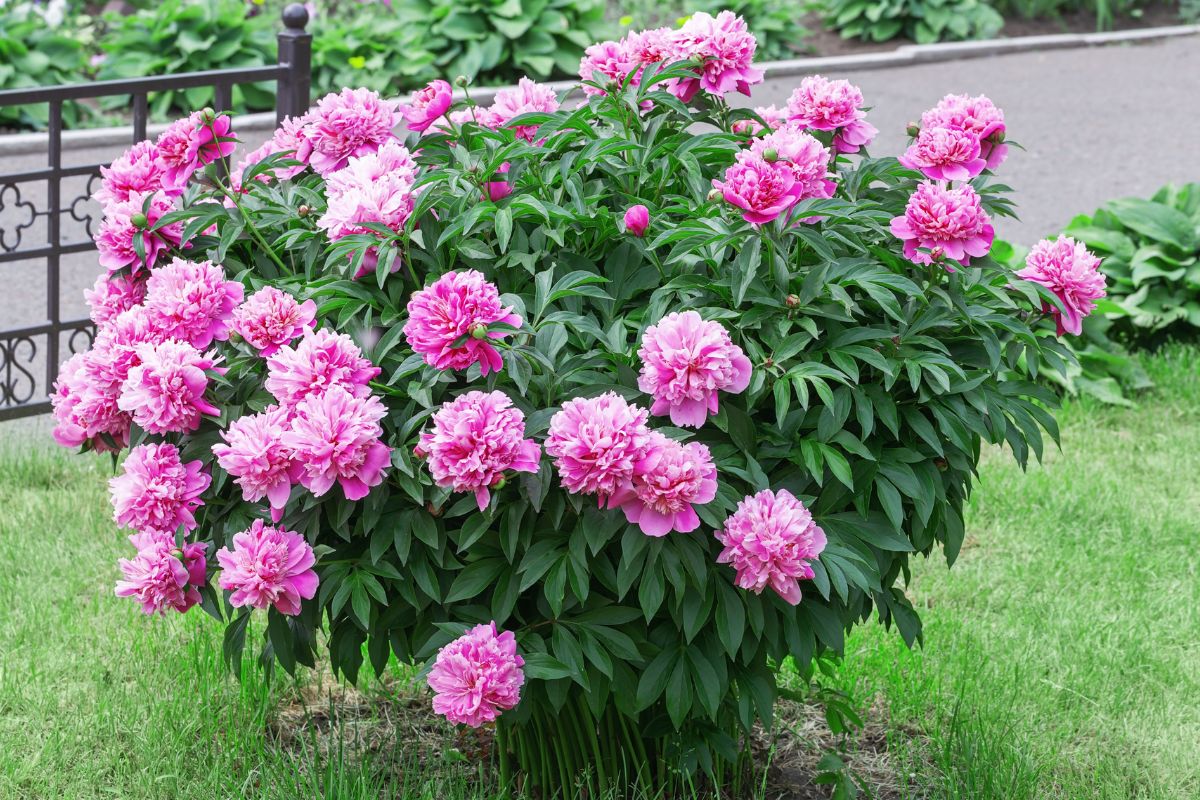 Peony growth habit.
Peony growth habit.


.png)




